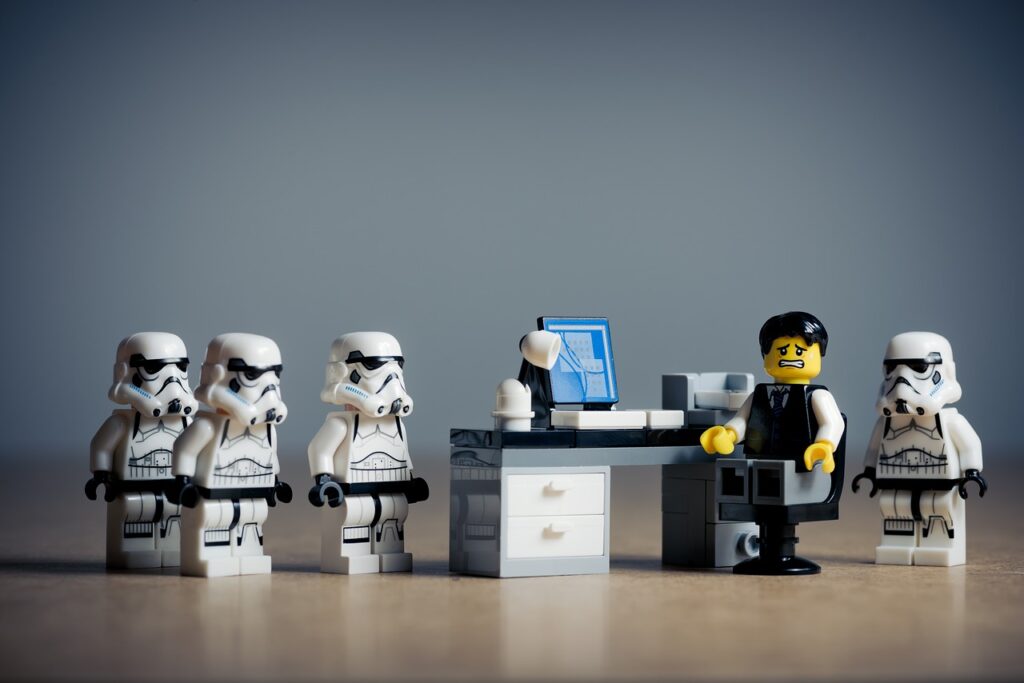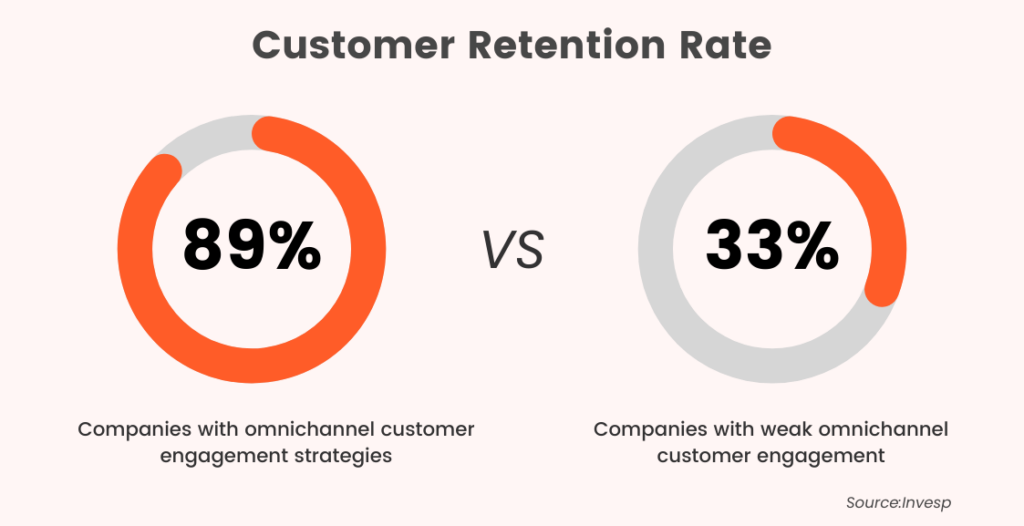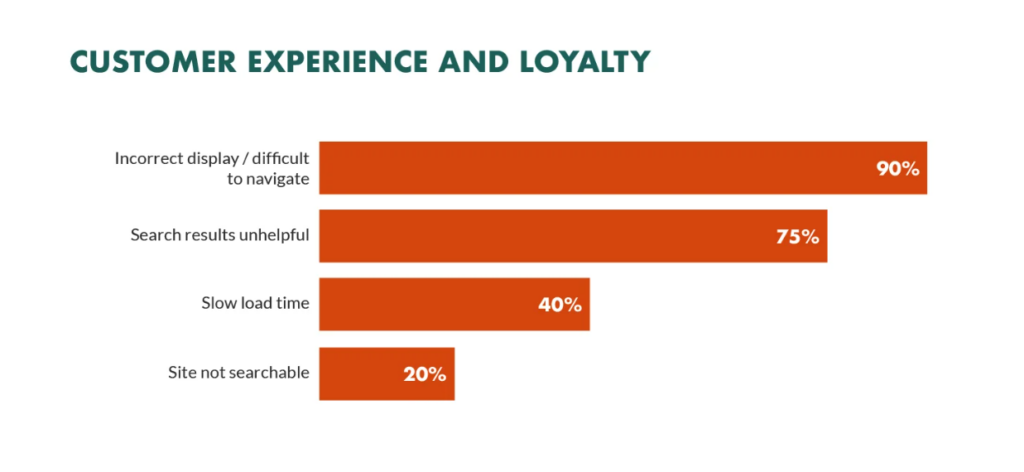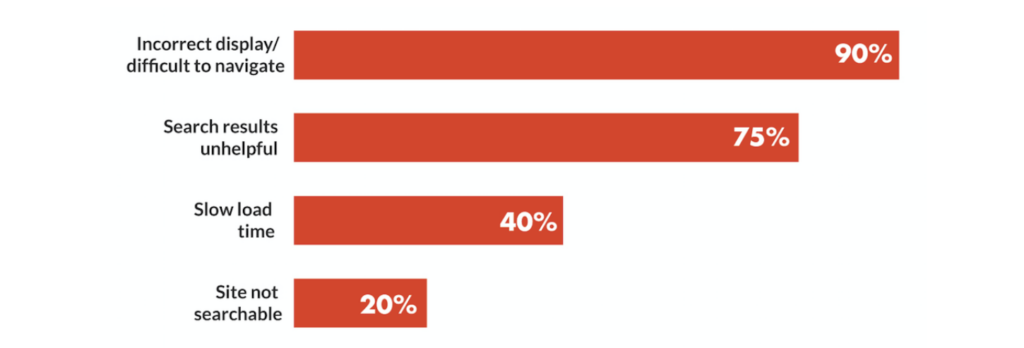
In today’s business landscape, creating a seamless and personalized customer experience across multiple channels is a necessity. A report states that businesses that use omnichannel strategies retain 89% of their customers compared to those that don’t.

This is where an email strategy comes in handy. By integrating email marketing into your omnichannel strategy, you can create consistent and nurturing experiences for customers. In this guide, we’ll explore the role of email marketing in boosting omnichannel customer experience.
Understanding Omnichannel Customer Experience
When it comes to serving customers, “all channels equal,” or “omnichannel,” is the gold standard. The components include physical stores, online/ecommerce platforms, social media, mobile apps, and email.
Omnichannel ensures that customers can interact with your brand in the way that suits them best, and all channels work together cohesively to provide the customer with a consistent brand experience.
The Challenges of Creating an Omnichannel Experience
The main challenge of creating an omnichannel experience is to synchronize all channels, ensuring that they work in harmony. Poor integration can result in unstructured, disconnected communication with the customer. Other challenges of creating an omnichannel experience include:
- Integrating disparate systems and technologies
- Ensuring consistency across all channels
- Providing a unified customer view
For example, a customer has a different experience using the brand’s website versus their mobile app, and their purchase history does not carry over between channels.
Email marketing can play a critical role in overcoming these challenges. Using an omnichannel email strategy, you can connect with customers at every stage of their journey. By crafting effective email campaigns, you can deliver targeted and relevant messages, thereby promoting engagement and sales.
The Role of Email Strategy in Boosting Omnichannel Customer Experiences
Customers still prefer using email as a means of contact. According to the Global Messaging Engagement Report, email was cited as one of the top three communication channels by 18% of respondents. What’s more, 77% of respondents check their email inbox daily or even more often. If you’re looking to find a tech co-founder for your startup, email may be a great way to reach out and build a relationship.
Due to its effectiveness and high return on investment (ROI), email remains the backbone of most marketers’ omnichannel marketing campaigns. In fact, the average ROI for an email marketing campaign is $36 for every $1 spent.
Let’s take a look at how you can use the strengths of email marketing to build omnichannel client interaction.
1. Adapt email targeting based on recipients’ actions on other channels.
You can boost your customer engagement and drive revenue to your brand by leveraging user data from various channels. The data can then be used to trigger automated email campaigns. For example, sending personalized and timely emails based on customer actions can significantly increase their interaction with your brand. Here are a few ideas:
- If a customer abandons their cart, send an email reminder to encourage them to complete their purchase.
- After a successful interaction with your web chat support team, follow up with an email asking for feedback and a review of the service.
- Show appreciation to customers who make a purchase by sending a personalized thank-you email and offering a coupon code for their next purchase.
By utilizing these automated email campaigns, you can efficiently nurture customer relationships and drive conversions for your products and services.
ALSO READ: Email analytics: What should you be tracking?
2. Gather customer data to supercharge your marketing.
Email and data go together like peanut butter and jelly, complementing each other perfectly.
Acquiring first-party data is essential for building a robust customer profile, and email is one of the most effective methods for collecting such data. For instance, when a user joins your email list, you can start collecting information about them for behavior-based targeting. After they sign up, you can even ask for additional information by inviting them to finish their profile or change their email settings.
Emails can then be tailored to each recipient based on this information and other data collected from customers across multiple channels. For instance, you can personalize the email based on the customer’s location, demographic information, the products they browsed on your site, and much more.
3. Keep communication flowing between relevant channels.
Customers may be unaware of the new channels you’ve added to your communication strategy. Use the following methods to invite subscribers to contact you in new ways by leveraging the widespread use of email:
- Offer a special discount to consumers who sign up for both email and SMS at the same time. To do this, simply add a phone number input field to your email signup form.
- Tell your email list subscribers to get the app so they may participate in the loyalty program and enjoy other benefits.
- You can improve your customer service response time by including a link to live chat in your emails.
ALSO READ: How To Use Recurring Emails to Bring Consistent Revenue
Best Practices for Using Email in Omnichannel Customer Experience
Get your customers out of the mobile maze!
We live in a world where mobile devices have become an extension of our lives, and customers expect businesses to meet their mobile engagement needs. However, many businesses are falling short, leaving customers frustrated and disengaged.

Recent research shows that over half of customers are deterred from doing business with a company if they have a poor mobile experience. That’s a lot of potential business lost!
So, what can businesses do to avoid losing customers? It’s simple: prioritize mobile.
Ensure that your website is mobile-friendly in terms of viewing and navigation and that your customer service support is easily accessible on mobile. By providing a seamless mobile experience, you’ll not only keep your customers happy but also stand out from your competition.
Avoid keeping your clientele waiting.
While email may be perceived as a slower communication channel for customer service, it doesn’t diminish the importance of providing prompt resolutions.
Email conversations may not have the real-time nature of phone calls or live chats, but customers still expect timely and satisfactory resolutions to their inquiries or issues. Failing to address customer concerns promptly can lead to frustration, dissatisfaction, and even negative word-of-mouth.
Toister Performance Solutions reports that 88% of clients expect an email response within an hour, with 30% expecting a reply within 15 minutes.

Automation is one approach to fulfilling these requirements. By setting up automated email responses for common queries, businesses can acknowledge the customer’s message and provide relevant information within seconds, even outside regular business hours.
Maintain data across all platforms.
For a consumer, nothing is more frustrating than being passed around from platform to platform, only to have to rehash their story each time. Customer frustration can be reduced by enhancing knowledge management across all platforms and teams.
“Customer service, social media, chatbot Platform, and other channels must be coordinated with email to deliver a consistent experience.”
There’s a good chance you’ll lose a customer if they call and are routed around to a different channel just to be asked to repeat themselves. Instead, offer a direct line of contact, and make it such that the support staff may quickly access the customer’s previous messages when prompted with a reference (such as the customer’s name). With this in place, things should go more easily.
To have a place that collects all data from each channel, you can hire a Node.js developer, that will maintain the company server and will build algorithms that allow organizing and use of data appropriately.
Test, Test, Test…
Many companies who invest in an omnichannel customer service strategy forget the most crucial step: testing.
The omnichannel experience can be evaluated in terms of success and failure by using the customer service software you already have in place.
This paints a crucial big picture for you. However, there is no better way to find out if everything is operating smoothly than to start a live chat or tweet and wait to see the speed and quality of the answer.
Conclusion
The future belongs to companies that implement omnichannel customer service.
To grow a robust email support system, it’s important to learn why your customers prefer email and to keep your cross-channel support standards at a high level.
Keep in mind that the human element is the glue that holds everything together. The secret to offering excellent customer service is having well-trained personnel who can solve customer problems and make a good impression.
Ultimately, the goal of any customer service channel is to deliver a positive and trustworthy experience that will strengthen your bond with the people who use it.
Featured image by kirill_makes_pics from Pixabay
The post How Can an Email Strategy Improve the Omnichannel Customer Experience? appeared first on noupe.